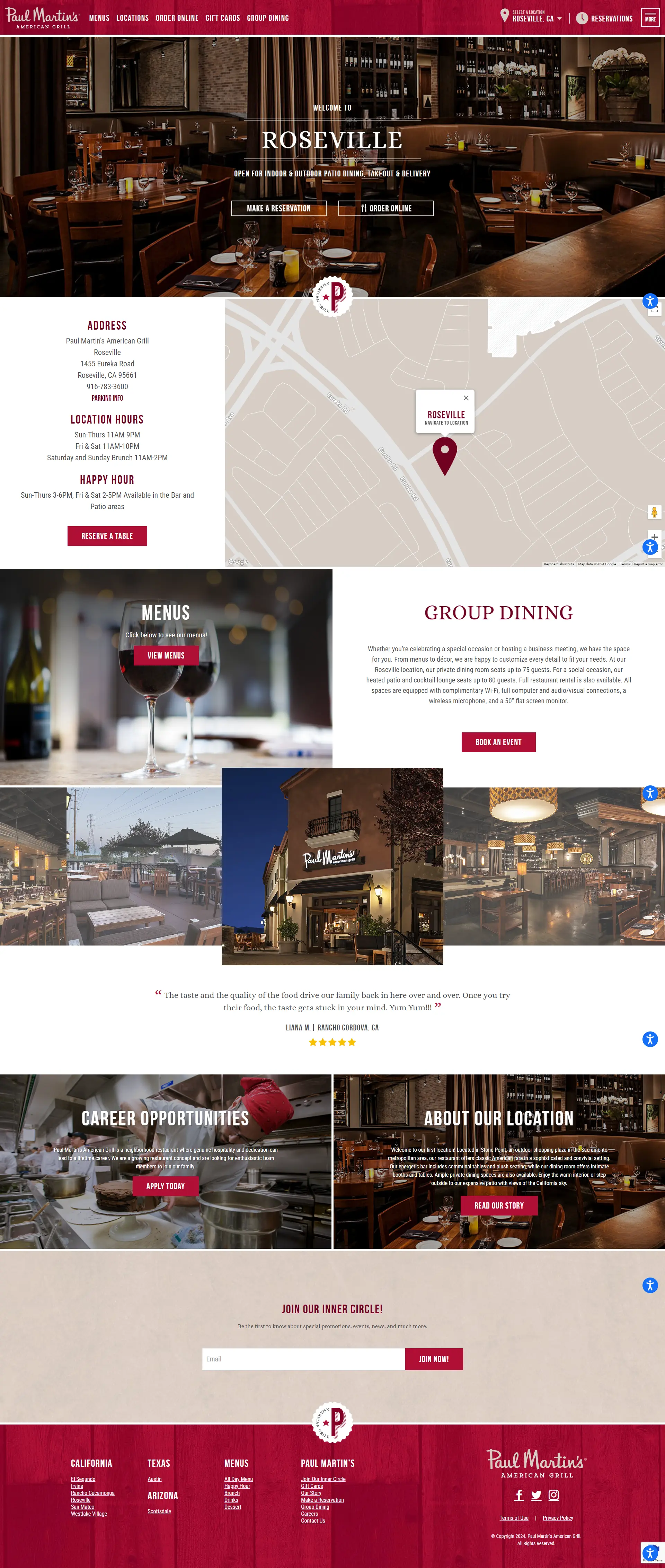Social media platforms have become indispensable tools for businesses to connect with their target audience, build brand awareness, and drive sales. However, while the allure of these platforms is undeniable, relying solely on a single one for all your marketing efforts can be a perilous strategy.
In this blog post, we delve into the dangers of putting all your eggs in one social media basket and explore the importance of diversification for long-term business success.
The Pitfalls of Relying on One Platform
1. Vulnerability to Algorithm Changes: Social media algorithms are constantly evolving, and these changes can significantly impact your organic reach and engagement. A tweak in the algorithm can render your content invisible to your followers overnight, leading to a drastic drop in traffic and potential customers.
2. Risk of Account Suspension or Bans: No matter how diligently you follow the platform’s rules, there’s always a risk of your account getting suspended or banned, either due to a violation (intentional or accidental) or a technical glitch. In such a scenario, your entire online presence on that platform vanishes, taking your audience and potential leads with it.
3. Limited Control and Ownership: When you build your entire marketing strategy on a third-party platform, you’re essentially renting space. You have limited control over the user experience, data collection, and overall presentation of your brand. Moreover, you’re at the mercy of the platform’s terms of service, which can change without notice.
4. Overdependence on a Single Audience: Each social media platform attracts a specific demographic. By focusing all your efforts on one platform, you’re limiting your reach to that particular audience segment. Diversifying across multiple platforms allows you to tap into a wider pool of potential customers.
5. Missed Opportunities on Other Platforms: While one platform might be thriving today, another might emerge as the next big thing tomorrow. By focusing solely on one platform, you risk missing out on opportunities to connect with your audience on other growing platforms.
Real-World Examples of Businesses Impacted by Single Platform Reliance
- Vine’s Demise: When the short-form video platform Vine shut down in 2017, many creators who had built their entire careers on the platform were left scrambling to find new avenues to reach their audience.
- Facebook’s Algorithm Changes: In 2018, Facebook’s algorithm changes drastically reduced the organic reach of business pages, forcing many businesses to rely heavily on paid advertising to reach their followers.
- Instagram’s Shadowbanning: Many users have reported experiencing “shadowbanning” on Instagram, where their posts are hidden from their followers without their knowledge, leading to a significant drop in engagement.
- MyPillow’s Twitter Ban: In 2021, MyPillow’s Twitter account was permanently suspended due to repeated violations of the platform’s civic integrity policy, cutting off a significant portion of their online audience.
- Gymshark’s Facebook Ad Account Suspension: In 2020, fitness apparel brand Gymshark had their Facebook ad account suspended without warning, causing a major disruption to their marketing campaigns and sales.
The Power of Diversification
Diversifying your marketing efforts across multiple social media platforms, as well as other channels like email marketing and your own website, offers several key advantages:
- Mitigates Risk: If one platform experiences issues or declines in popularity, your business won’t be completely derailed.
- Expands Reach: You can tap into different audience segments on various platforms, increasing your brand’s visibility and potential customer base.
- Increases Control: By building your own website and email list, you own your audience data and have more control over the user experience.
- Enhances Brand Presence: A multi-platform presence creates a sense of omnipresence, making your brand appear more established and trustworthy.
Building a Diversified Marketing Strategy
- Identify Your Target Audience: Understand where your ideal customers spend their time online and focus your efforts on those platforms.
- Create High-Quality Content: Tailor your content to each platform’s specific format and audience preferences.
- Engage with Your Audience: Respond to comments, messages, and mentions promptly to build relationships and foster loyalty.
- Drive Traffic to Your Website: Use social media to direct your audience to your website, where you have more control over the experience and can capture leads.
- Build an Email List: Offer valuable incentives to encourage visitors to subscribe to your email list, giving you a direct line of communication with your audience.
Key Actions for Businesses Overly Reliant on Social Media
If your business is currently solely reliant on social media platforms, there are several crucial next steps you need to take to mitigate risk and diversify your marketing strategy:
- Establish a Strong Foundation: Build Your Own Website: Your website is your digital home, the one place on the internet where you have complete control. It’s essential to have a well-designed, user-friendly website that showcases your brand, products/services, and contact information.
- Start Building an Email List: Email marketing is a powerful tool for direct communication with your audience. Offer incentives like exclusive discounts or valuable content to encourage social media followers to subscribe to your email list.
- Diversify Your Social Media Presence: Don’t put all your eggs in one basket. Expand your presence to other relevant platforms where your target audience is active. Each platform has its unique strengths and audience demographics, so tailor your content accordingly.
- Create a Content Strategy for Each Platform: Develop a consistent content strategy for each platform, ensuring your content is engaging, valuable, and aligned with your brand identity. This helps you build a loyal following on multiple platforms.
- Drive Traffic to Your Website: Use social media to drive traffic to your website by including links in your bio, posts, and stories. Encourage your followers to visit your website for more information, exclusive offers, or to make a purchase.
- Utilize Paid Advertising: Consider using paid advertising on social media to reach a wider audience and drive targeted traffic to your website. This can be especially helpful when starting on new platforms or trying to boost your reach on existing ones.
- Track Your Analytics: Monitor your analytics on each platform and your website to understand which channels are driving the most traffic and conversions. This data will help you refine your strategy and allocate resources effectively.
- Stay Informed and Adapt: The digital landscape is constantly changing. Stay informed about the latest trends, algorithm updates, and new platforms. Be prepared to adapt your strategy as needed to stay ahead of the curve.
- Explore Other Marketing Channels: Don’t limit yourself to social media. Consider exploring other marketing channels like SEO, content marketing, influencer partnerships, and paid advertising on other platforms like Google Ads.
- Seek Professional Help if Needed: If you’re feeling overwhelmed or unsure where to start, consider seeking help from a digital marketing professional who can guide you through the process of diversifying your marketing strategy and building a more resilient online presence.
By taking these proactive steps, you can reduce your reliance on a single social media platform and create a more sustainable and successful marketing strategy for your business in the long run. Remember, diversification is key to ensuring that your business thrives even in the face of unexpected changes or challenges in the digital landscape.
Conclusion: Building a Resilient Online Presence
The allure of social media is undeniable, offering businesses unprecedented opportunities to connect, engage, and convert. Yet, as we’ve explored, the perils of relying solely on a single platform are equally apparent. Algorithm shifts, account suspensions, and the inherent lack of control can leave businesses vulnerable and exposed.
The stories of businesses impacted by these challenges serve as stark reminders of the importance of diversification. From Vine’s sudden demise to MyPillow’s Twitter ban, the message is clear: don’t put all your eggs in one social media basket.
Instead, embrace a multi-platform approach. Cultivate a strong presence on various social channels while simultaneously investing in your own digital real estate – your website and email list. This diversified strategy not only mitigates risk but also expands your reach, amplifies your brand presence, and grants you greater control over your online narrative.
Remember, social media is a powerful tool, but it’s just one piece of the puzzle. By strategically leveraging multiple platforms and channels, and prioritizing your owned assets, you can build a resilient online presence that withstands the ever-changing digital landscape.
Take action today. Diversify your marketing efforts, reclaim ownership of your audience, and set your business on a path toward sustainable growth and success. The digital world is vast and full of opportunities – don’t limit yourself to a single corner of it.
Feeling overwhelmed?
We’re here to help! Contact us for a free consultation on how to diversify your marketing and build a resilient online presence.















